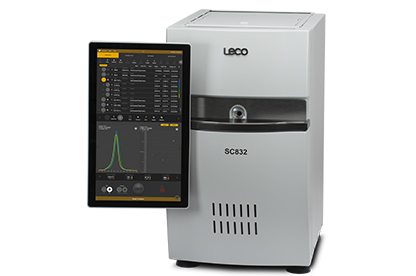About 90 years ago, LECO released the first of its kind rapid carbon determinator, changing the iron and steel industry forever. Since then, LECO has consistently pushed the boundaries of analytical testing for a wide range of materials and industries, including the energy sector. With modern advancements in elemental and thermal analysis, thousands of companies around the world have decided to put their trust in LECO for their analytical needs. LECO has invested countless hours and resources to provide the best possible solutions for various forms of energy research. From being a member of the Volta Foundation to simply reaching out to customers, we stay abreast of the challenges and needs of the industry and continuously strive to provide the best solutions.
The Role of Carbon and Sulfur in Batteries
One of those solutions is our line of rapid combustion analyzers that determine carbon and sulfur content. In the rapidly evolving field of battery technology, the precise determination of elemental composition is critical for optimizing performance and ensuring long-term stability. Among the key elements, carbon and sulfur play pivotal roles in influencing the electrochemical behavior of battery materials. Carbon, often used as a conductive additive, must be present in controlled amounts to maintain electrical conductivity without compromising structural integrity. Sulfur, on the other hand, is a common component in advanced battery chemistries, where its accurate quantification is essential to avoid capacity fading and degradation. Understanding and controlling the levels of these elements is fundamental to the development of high-performance, durable batteries, and will be key in the development of next-generation batteries.
 Combustion Analysis as a Solution
Combustion Analysis as a Solution
The most effective method for determining carbon and sulfur content in battery materials is combustion analysis. This technique involves oxidizing the sample in a high-temperature furnace—either resistance or induction-based, depending on the material type and analytical preference—in the presence of pure oxygen. The carbon and sulfur in the sample are converted into carbon dioxide (CO₂) and sulfur dioxide (SO₂), respectively, which are then measured using infrared detection. This method offers high sensitivity, precision, and speed, making it ideal for both research and quality control environments. The choice between resistance and induction furnaces allows for flexibility in handling a wide range of sample matrices, from powders to solid electrodes. It can also be used in conjunction with ICP analysis to get a more comprehensive view of your materials, but ICP analysis alone can leave you questioning important elements like carbon and sulfur.
 Assessing Purity and Quality with Thermogravimetric Analysis
Assessing Purity and Quality with Thermogravimetric Analysis
Beyond elemental analysis, assessing the overall purity and quality of battery materials also requires evaluating parameters such as moisture content, ash, and loss on ignition (LOI). These measurements, typically performed using a macro thermogravimetric analyzer (TGA), provide valuable insights into the thermal stability and compositional integrity of both raw materials and recycled battery products. Moisture can affect the electrochemical performance and shelf life of batteries, while ash content indicates the presence of inorganic impurities. LOI helps in understanding the amount of volatile substances, which can influence the safety and efficiency of the battery.
Comprehensive Solutions with LECO
Together, combustion and thermal analyses form a comprehensive toolkit for ensuring the reliability and sustainability of modern energy storage solutions. You can find everything you need to feel confident in your results at the company that has been trusted with analyses for over eight decades.
Learn More
You can learn more about combustion and it’s use in battery materials testing by attending our upcoming webinar. You’ll walk away with a better understanding of the key differentiators between combustion and ICP analyses, as well as more knowledge about the benefits of having a LECO instrument (or several) in your laboratory.

 Assessing Purity and Quality with Thermogravimetric Analysis
Assessing Purity and Quality with Thermogravimetric Analysis


